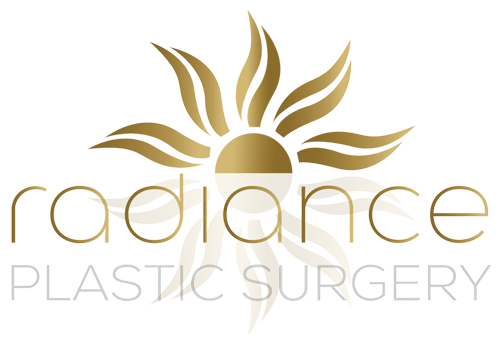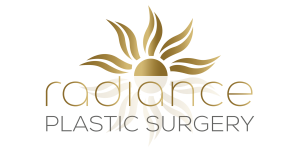When considering a breast lift or mastopexy, it is essential to understand that scarring is an inevitable part of the healing process. A breast lift aims to elevate and reshape sagging breasts by removing excess skin and repositioning the remaining breast tissue and areolas. The extent of scarring after a breast lift procedure can vary depending on the surgical technique used, the surgeon’s skill, and your body’s natural healing process.
Scarring is a natural outcome of any surgical procedure, and this includes aesthetic interventions like a breast lift. While incisions are strategically placed to be as discreet as possible—following the natural contours of your breasts—some visible lines will remain. Over time, these scars typically fade and become less conspicuous. Strategies to minimize scarring include following postoperative care instructions meticulously, using silicone sheets or gels, and avoiding sun exposure.
Key Takeaways
- A breast lift involves incisions, which result in some degree of scarring.
- The visibility of breast lift scars diminishes over time with proper care.
- Post-surgery strategies and diligent aftercare contribute to improved scar healing.
Understanding Breast Lift Surgery
When considering the rejuvenation of your breast contours, understanding the surgical options, processes, and expected outcomes of a breast lift, also known as mastopexy, is pivotal. In this section, we will explore what the procedure entails, why some may require it, and the various techniques surgeons may employ.
What is Mastopexy?
Mastopexy, colloquially known as a breast lift, is a plastic surgery procedure designed to elevate and reshape sagging breasts. Over time, the breast tissue can lose its elasticity and firmness, leading to a change in breast contour. A breast lift aims to restore a more youthful and aesthetically pleasing breast profile by removing excess skin and tightening the remaining tissue. The desired outcome is firmer breasts with improved shape and nipple position.
Factors Affecting the Need for a Lift
Several factors contribute to the need for a breast lift, including:
- Genetics: Intrinsic qualities that dictate skin and breast tissue elasticity.
- Aging: The natural aging process can reduce skin elasticity and sagging.
- Pregnancy and Breastfeeding: These can significantly change the shape and volume of breasts, leading to potential sagging.
- Weight Fluctuations: Weight gain or loss can affect breast shape and the skin’s ability to retract. Understanding these factors can help in the decision-making process when considering mastopexy.
Surgical Techniques Used
The choice of surgical technique for mastopexy is typically informed by the degree of lift required and the patient’s anatomy. Common techniques include:
- Crescent Lift: Often used when a subtle lift is needed, it involves a small incision running halfway around the top edge of the areola.
- Peri-Areolar or “Donut” Lift: This involves a circular incision around the areola and is suitable for women with mild sagging.
- Vertical or “Lollipop” Lift: Includes incisions around the areola and vertically down to the breast fold for a moderate lift.
- Inverted T or “Anchor” Lift: Utilized for significant reshaping, this technique combines the “lollipop” lift with a horizontal incision along the breast crease.
Each technique is selected based on the surgeon’s assessment of your specific conditions and desired outcomes. The methods mentioned are the most widespread and represent the current advancements in breast lift surgeries that are carefully executed to minimize scarring while maximizing the result.
Scarring and Healing Process
When considering a breast lift, it’s crucial to be aware of the scarring and healing process involved. Successful recovery and minimization of scars are closely linked to the surgical methods employed and post-operative care.
Types of Incisions and Resulting Scars
Breast lift surgery, or mastopexy, typically involves incisions around the areola, vertically down to the breast crease, and sometimes horizontally along the crease. These are periareolar, vertical, and inverted T or anchor incisions. Each type of incision corresponds to certain breast lift techniques and will result in various patterns of breast scars. A periareolar incision leads to circular scarring around the areola, while the vertical and anchor incisions can result in scars shaped like a lollipop or an anchor, respectively.
The Healing Timeline
The recovery timetable for a breast lift consists of several stages. Initial bandages are applied, and sutures are usually removed within a week while redness and swelling diminish. During the first few months, scars typically appear pink and may feel firm and slightly raised. Many scars will fade and soften with time, often becoming less noticeable. Following the post-operative guidelines your surgeon provides to support the healing process is crucial.
Factors Influencing Scar Appearance and Recovery
Several factors can affect the appearance of scars after a breast lift and your overall recovery, such as:
- Genetics: Your genetic predisposition can influence how your skin forms scar tissue, including the potential development of keloid or hypertrophic scars.
- Blood flow and skin quality: Healthy blood flow and good skin elasticity may enhance healing and reduce scarring.
- Post-operative care: Following your surgeon’s advice on using scar gels or silicone sheets can improve the appearance of scars.
- Lifestyle choices: Avoiding smoking, protecting scars from sun exposure, and managing stress are essential for optimal healing.
- Complications: If there are any post-operative complications, they can affect the scarring outcomes and may lead to the need for scar revision surgery.
It’s essential to understand that while scars are a natural outcome of the breast lift procedure, their progression through the healing stages can be supported through various methods, like conformity to a guided recovery plan. Your surgeon might recommend specific strategies, such as massage or topical treatments, to assist in scar maturation.
Minimizing Scarring Post-Surgery
To mitigate scarring after a breast lift, meticulous attention is crucial in both postoperative care and considering various scar treatment options. Your plastic surgeon’s expertise and adherence to care recommendations play pivotal roles in the quality of the surgical outcome.
Postoperative Care to Reduce Scarring
Immediate Actions Post-Surgery: Your journey to minimizing scarring begins right after the surgical procedure. Ensuring you follow the tailored advice from your board-certified plastic surgeon is essential. You’ll likely be instructed to wear a supportive bra that promotes proper healing and symmetry while also protecting the incision sites from irritation.
Protection from Sun Exposure: It is imperative to shield your scars from the sun. Applying a broad-spectrum sunscreen with a high SPF is recommended. UV exposure can cause scars to darken and become more noticeable, especially in individuals with a lighter skin tone.
Scar Treatment Options
Topical Treatments: Over-the-counter scar gels, enriched with ingredients such as Vitamin E, have been advocated for scar care. Silicone sheets and gels form a protective layer and may improve the appearance of scars by keeping the area hydrated.
Professional Interventions: More advanced treatments are available for scars that do not fade adequately. Options include microneedling, lasers, chemical peels, and steroid injections. Your surgeon can tailor these methods to suit the unique characteristics of your skin and the specifics of your scarring. In cases where the appearance of scars is significantly pronounced, scar revision surgery may be considered to improve overall cosmesis.
Utilizing massage techniques under the direction of your surgeon may also facilitate improved outcomes, softening and flattening the scar tissue over time.
Remember, the efficacy of these treatments varies, and a comprehensive approach may involve a combination of methods. Your board-certified plastic surgeon will guide you through the most suitable options and devise a plan for optimal results.
Considerations Before Undergoing Mastopexy
When contemplating a breast lift, often referred to as mastopexy, it’s crucial to weigh the potential risks and benefits and understand the impact of personal factors on surgical results.
Evaluating the Risks and Benefits
Before opting for a mastopexy, consider that this procedure aims to elevate and reshape your breasts for a more youthful and aesthetically pleasing appearance. A breast lift can rejuvenate your figure with a more uplifted and youthful profile. It often involves repositioning the nipple and areola to a more natural height. However, it’s essential to acknowledge that any surgical intervention carries intrinsic risks, such as scarring. Although a board-certified plastic surgeon will strive to minimize scarring, all mastopexies result in some degree of permanent marks. Outcomes like the final size and shape are also subject to individual variability and surgical limitations.
When considering adding breast implants for augmentation in conjunction with a lift, understand that this might increase the complexity of the surgery and could affect the healing process. Evaluate the pros and cons carefully, discussing with your surgeon how implants might enhance or detract from the desired result. It’s crucial to consider if the potential outcomes align with your definition of ‘worth it.’
Understanding the Impact of Lifestyle and Physiology On Surgical Outcomes
Your lifestyle and physiological factors play a significant role in the outcome and satisfaction of a mastopexy. Factors such as smoking, alcohol consumption, and usage of certain medications can affect your eligibility for the surgery and the quality of healing afterward. It’s crucial to cease smoking well in advance of the surgery, as it may interfere with the body’s ability to heal and lead to more noticeable scars.
Moreover, your plastic surgeon will likely discuss how weight fluctuations, pregnancy, and vigorous or strenuous exercise post-surgery can alter your results. Weight loss or gain can significantly impact breast size and shape, possibly compromising the surgery’s benefits. Avoid strenuous physical activities during recovery to prevent strain on healing incisions.
It is also important to plan for a time in your life when you can allow for sufficient recovery, as the healing process is integral to the success of mastopexy. An informed decision regarding breast lift surgery should anticipate a necessary period of rest and limited activity, ensuring that the surgical sites heal optimally.
By understanding these key issues and consulting with a board-certified plastic surgeon, you can set realistic expectations for your mastopexy and are more likely to be satisfied with your surgical outcome.

